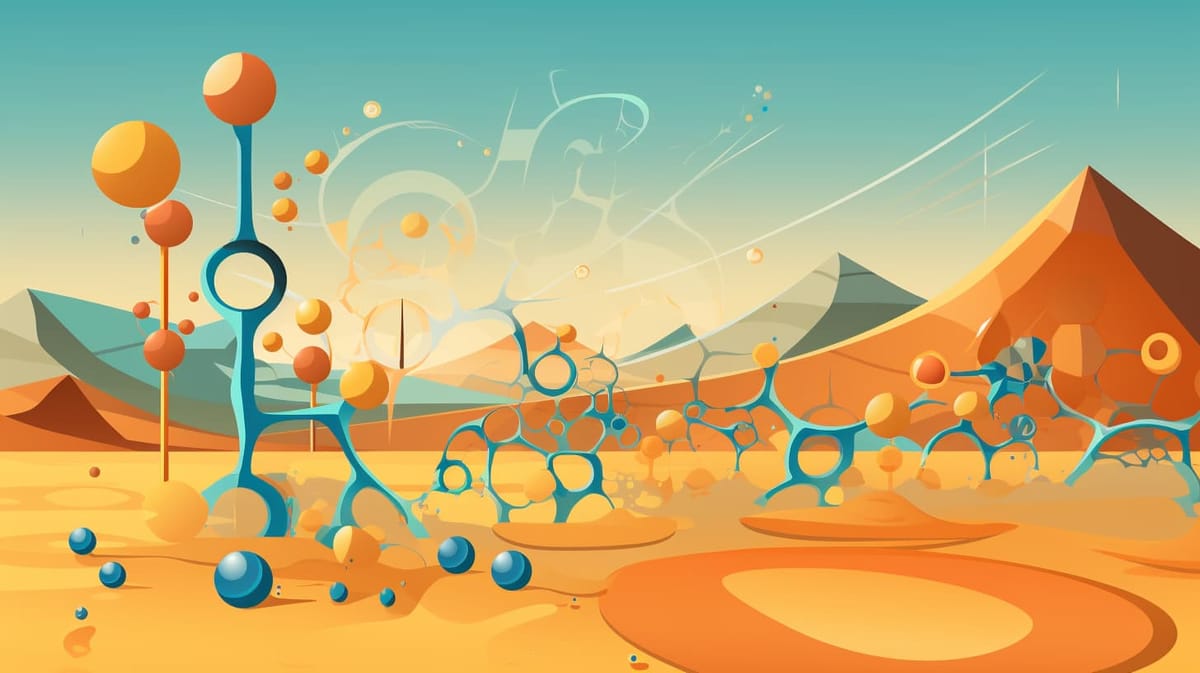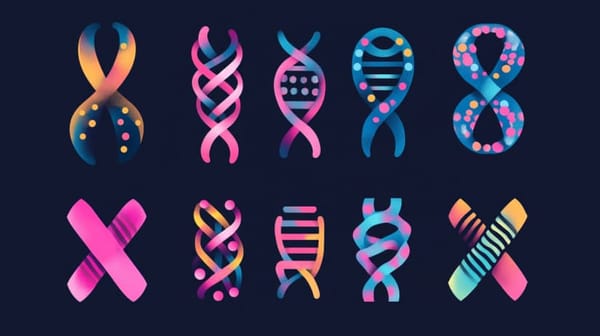We have to talk about stem cells when talking about dry fasting. Most of us dry fast because of these stem cell benefits and claims. I mean, that's why anyone fasts really. For health. If it wasn't healthy and made you live longer, no one would fast unless they were super focused on spirituality and the connection (even then they probably wouldn't).
Stem cells are the body's raw materials, the cells from which all other cells with specialized functions are generated. Imagine them as blank slates or universal cells. Under the right conditions in the body or a laboratory, stem cells divide to form more cells, called daughter cells. These daughter cells either become new stem cells (self-renewal) or become specialized cells (differentiation) with a more specific function, like blood cells, brain cells, heart muscle cells, or bone cells. No other cell in the body has this natural ability to generate new cell types.
There are different types of stem cells: embryonic stem cells, which come from unused embryos resulting from an in vitro fertilization procedure and are donated for research, and adult stem cells, which are found in small numbers in most adult tissues, like bone marrow or fat. Researchers have also discovered ways to induce a cell to behave like an embryonic stem cell, known as induced pluripotent stem cells, offering a renewable source of replacement cells and tissues to treat diseases like Parkinson's, spinal cord injury, heart disease, diabetes, and arthritis. Inducing stem cells in a lab is currently experimental with lots of warnings of potential tumorigenicity.

Stem cells are essential for growth, healing, and renewal. They offer the potential for treating diseases by replacing damaged or diseased cells and have been a hot topic in medicine and research for their potential therapeutic uses. However, their use is also subject to ethical debates, particularly concerning embryonic stem cells.
Understanding Stem Cell Exhaustion
I think you don't need me to explain stem cell exhaustion too extensively at this point. You understand that stem cells are the magical cells in the human body. They are the spark of life and the infinitely complex mechanism that makes everything possible. But, just like normal cells, everything has a limit. Right? Right...? The most common answer is yes. And that includes stem cells. Even if they have X amount of extra divisions and X amount of more affinity to telomerase activity (keeping telomeres longer), there is technically a limit, and thus why we age.
What we're trying to figure out here is - Does dry fasting have a magical ability to change this equation? I think it does. But I also think that it requires the right tweaking. If done excessively and incorrectly you're potentially aging faster, even if you are healing current problems. It reminds me of the carnivore diet speeding up healing but at the expense of longevity. But I do see the correct implementation of dry fasting and a stem cell regeneration-focused environment to be the answer. Sort of like invoking a medium that regenerates the stem cells. Similar to the mediums used in stem cell clinics to induce pluripotent stem cells from regular cells. Those mediums are incredibly complex and probably still ridiculously oversimplified.
The interesting argument comes in the form of talking about acute problems versus longevity. If you're going to die from certain diseases or situations then improving your situation with something like a hyper ketosis diet or extensive fasting makes sense. Cut off a few years from the end to be able to simply "survive" until then. I think the relevant saying is robbing Peter to pay Paul. For the anime freaks, think of Naruto's "Guy" opening the 8th gate of death ;)

Reasons for stem cell exhaustion
"Hayflick" Cellular Division Limitation: Each time a stem cell divides and creates new cells, it gets a bit closer to its limit, known as the Hayflick limit. This is the number of times a cell can safely divide before it's at risk of DNA damage or mutations. As stem cells reach this limit, their ability to regenerate and repair tissues decreases, a process we refer to as stem cell exhaustion.
Telomere Shortening: Each time a cell divides, the telomeres (protective caps at the end of chromosomes) get a bit shorter. Eventually, they become too short to protect the chromosomes, leading to cell aging and death. This contributes to stem cell exhaustion as the pool of healthy, functional stem cells dwindles.
Environmental Factors: Factors like chronic stress, poor diet, and exposure to toxins can cause damage to stem cells or disrupt their environment, making it harder for them to function properly.
Signs of stem cell exhaustion and aging

Real World Examples
Aging Skin: As we age, the stem cells in our skin become exhausted. This means they can't generate new skin cells as effectively, leading to thinner, more fragile skin, and slower wound healing. This is why cuts and bruises take longer to heal as we get older.
Muscle Regeneration: Athletes rely on stem cells to repair and build muscle tissue after intense workouts. However, as stem cells become exhausted with age, muscle repair becomes less efficient, which is one reason older athletes may take longer to recover from injuries or intense physical activity.
Bone Marrow and Blood Cells: Our bone marrow contains stem cells that produce blood cells. Over time, these stem cells can become exhausted, leading to a decrease in the production of new blood cells. This can contribute to conditions like anemia (a deficiency in red blood cells) in older adults.
How Might Stem Cell Exhaustion Be Fixed?
- Dry Fasting, which may trigger more differentiation and hopefully telomerase increase. Why do I lean towards this being the case and not the other way around? Because extreme stress is correlated to longevity. For example, a strictly hypothetical situation related to surviving something like a concentration camp. A lot of survivors ended up centenarians. Because we know that extreme stress correlates to longevity I extrapolate this to a link between extreme starvation and living longer. I'm also aware that the prisoners were often at the brink of death, which to me implies that there is something there that provides telomerase increases or innate biological reprogramming of stem cells. I know this is a touchy subject, and I could be completely wrong here as survivorship bias probably plays a large role.
- Hypertonic stress also fixes microtubules, and improves structured water inside of cells, so it's not a far reach to assume that it allows for reprogramming of stem cells and increasing telomeres.
- I think it's important to strike the right balance to not overdo it. Similarly to women over-fasting, hitting nutritional deficiencies, and chronic stress which lead to hair loss, emotional dysregulations, and other problems.
- Reprogramming differentiated cells into stem cells and reinjecting them into the patient. Currently, there is a risk of tumour formation with these therapies, so it makes finding a natural alternative like dry fasting look so much better.

- Listening to stem cell regeneration frequencies. Anecdotal evidence seems strong by observing comments on forums and video sites, followed by research papers corroborating these possibilities.

- Red light therapy
- The right diet is critical for the power of fasting to work on stem cells
- Upregulating telomerase activation (estrogen>testosterone, stress reduction, exercise, sleep, antioxidants/sirtuin activators, EGCG).
- NAD+ boosting + Resveratrol
- TA-65 from Astragalus (experimental) - but also leads to Astralagus extract supplementation as an option
Dry Fasting and Stem Cells Overview
Dry fasting, an intriguing and rigorous practice of abstaining from both food and water, raises fascinating questions about its impact on the body, particularly concerning the regeneration and exhaustion of stem cells. Proponents of dry fasting argue that this extreme form of fasting can catalyze profound physiological changes, including the activation of autophagy – the body’s mechanism for cleaning out damaged cells and regenerating new ones. But how does this intense form of fasting affect the body's reservoir of stem cells? Does it contribute to stem cell rejuvenation or does it accelerate stem cell exhaustion?
The theory of dry fasting suggests that by pushing the body to its limits, it might trigger a survival mechanism, potentially leading to enhanced repair and regeneration processes at the cellular level. This includes the intriguing possibility of influencing the health and longevity of stem cells, the body's versatile builders and repairers. Yet, the relationship between dry fasting and stem cell behavior is complex and layered with scientific and physiological considerations. While the practice is lauded for its potential to cleanse and rejuvenate, the risks, especially the stress of dehydration, cannot be ignored. Understanding the delicate balance between the profound stress of dry fasting and its potential to stimulate cellular rejuvenation is crucial for anyone considering this practice. With careful consideration and guidance, exploring the nexus of dry fasting and stem cell health could unlock new perspectives on wellness and longevity.
Investigating the Relationship between Dry Fasting and Stem Cell Health
Stem cells are said to only really be activated 3 days into the fast - this is supposed to correlate with the acidotic crisis. Is there truth to this?
What actually activates stem cells?
- Autophagy is focused on clean-up and creating a conducive environment for regeneration and activation. Think of autophagy as also the mechanism that cleans up and resets the stem cells to a younger, healthier state. Also removes senescent cells which directly act against stem cells and make everything run less efficiently.
- Ketosis. In the case of stem cell activation, it seems that ketosis enhances anti-inflammatory states and reduces oxidative stress. Creates an environment that supports the activation of quiescent stem cells. This can be a double-edged sword without powerful autophagy, as you can deplete your quiescent stem cell pool if in ketosis for too long (chronic vs acute).
- Increased Growth Factor Signaling. Increased Insulin-like Growth Factor-1. Important to do this in the form of fasting because this simultaneously creates an environment of low insulin signaling. So the IGF-1 is released in a more controlled manner which limits activation of pathways associated with aging and cancer risk.
- Increased Fibroblast Growth Factors (FGFs). Neurogenesis, Wound Healing, stimulating stem cell proliferation, maintaining pluripotency, and differentiation. From the breadcrumbs we get when we dry fast, such as intensely quick wound healing, it wouldn't be farfetched to assume that FGFs get stimulated quite well.
Are osmolytes important in stem cell regeneration?
Absolutely, and once again, why I highly recommend my osmolyte protocol and truly believe it's one of the keys to perfecting dry fasting.

- Cellular Protection: Osmolytes protect cells from extreme osmotic conditions, which can otherwise lead to protein denaturation and aggregation. By stabilizing proteins and maintaining cellular integrity, osmolytes support the survival and function of stem cells under stress.
- Protein Folding and Function: Osmolytes promote proper protein folding and prevent misfolding, which is crucial for the function of signaling molecules, enzymes, and structural proteins within stem cells. They can influence the expression of heat shock proteins and other stress response elements. Very important.
- Cryopreservation: Osmolytes are used in the cryopreservation of stem cells to protect them from ice crystal formation and osmotic stress during the freezing and thawing processes.
- Tissue Engineering: In tissue engineering, osmolytes can be added to culture media to enhance the survival and proliferation of stem cells in artificial environments, improving the outcomes of regenerative medicine strategies.
What would you eat after dry fasting to maximize stem cell benefit?
I always talk about the trifecta when consulting or theorizing about the ultimate healing steps: Autophagy, Stem Cell Regeneration, and Parasympathetic. A good diet is the key to stem cell regeneration, no doubt about it. But don't forget that parasympathetic is an important piece of the puzzle, and without it, you won't get the full benefits. This is where biohacks like magic mushrooms come in. Obviously, you can go the more traditional route and get stress-relieving supplements and sleep aids, and focus on meditation, breathwork, and mindfulness too.
Optimizing stem cell regeneration and function post-infusion theoretically involves supporting cellular health, reducing inflammation, enhancing telomerase activity, and providing the nutrients necessary for cell proliferation and differentiation. Based on these criteria, here are ten dietary supplements that could be considered to potentially support stem cell function and health, along with their logic for inclusion:
- Omega-3 Fatty Acids: Anti-inflammatory properties to help reduce inflammation that might impair stem cell function. This is my favorite supplement and one I believe you can't get enough of. Fish were probably one of the main reasons humans were able to evolve so much, and keep the brain fed and healthy. You should always have a good fish oil supplement daily.
- Vitamin C and B: Essential for collagen synthesis and antioxidant defense; also plays a role in enhancing iPSC generation, suggesting a supportive role in stem cell function. The golden combo for dry fasters. As well as important for mushroom therapy. I think having a B-Complex with included Vitamin C is important.
- Curcumin (Turmeric): Potent anti-inflammatory and antioxidant properties that could protect stem cells from oxidative damage. Fisetin can also fall into this category. Shout out Dunning! But in reality curcumin is cheaper and almost as good. See my article: Why I don't agree with the Phoenix Protocol for more information.
- Resveratrol: Antioxidant found in grapes and berries, shown to activate sirtuins which are linked to longevity and possibly stem cell function. The wealthy and popular biohacker combo is resveratrol with NMN for the NAD+ synergy.
- Green Tea Extract (EGCG): Antioxidant and anti-inflammatory effects, with studies suggesting it may support the proliferation and survival of stem cells. Green tea is a fantastic tool, but we're also trying to keep caffeine low. Caffeine plays too much of a role in cortisol upregulation and we want to limit stress to maximize stem cell regeneration. EGCG extract is extremely low in caffeine as the process tries to remove as much as possible. Sort of like decaffeinated green tea, which is also an option.
- Quercetin: A flavonoid with antioxidant and anti-inflammatory properties, shown to have senolytic activity, potentially clearing senescent cells that hinder regeneration.
- Vitamin D: Supports bone marrow function and has been linked to the health of various stem cells; it also plays a role in immune regulation.
- Selenium: An antioxidant that supports immune function and may protect stem cells from oxidative stress.
- Zinc: Essential for DNA synthesis and repair, immune function, and has been shown to play a role in stem cell differentiation and proliferation.
- NAD+ Precursors (e.g., NMN or NR): Nicotinamide mononucleotide (NMN) or nicotinamide riboside (NR) to boost NAD+ levels, supporting cellular energy metabolism and potentially enhancing stem cell vitality and function.
Balancing the Benefits and Risks of Dry Fasting and Stem Cells
The deeper you go into a fast, the more sustained and larger stem cell regeneration effects. However, the deeper you go into a fast, the more stress you apply to the body, and it becomes critical to balance it properly. Also the longer you fast the more you activate your quiescent stem cell pool. If you fast or refeed incorrectly you may end up with undesirable results. Usually, shorter fasts are much safer and highly recommended for beginners, the same way you introduce stresses like exercise to the body.
Are there specific types of dry fasting that are more beneficial for stem cell regeneration?
Yes, the deeper you go into the fast the more the stem cell regeneration occurs. The peak is achieved around 72 hours of water fasting. We can theorize that this occurs sooner on a dry fast since we know that autophagy levels are achieved 3x faster.

To play it safe we should look at 72 hours as the peak marker for stem cells even across dry fasting. At least until we get more research. It's important to note that as the fast continues these peak stem cell regeneration continues and may activate some additional stem cell benefits. The study on stem cell activation and regeneration focused on water fasting and hematopoietic stem cells, which means we can safely say that fasting is confirmed to essentially rejuvenate and clean the blood very effectively.
| Fasting Duration | Expected Cellular Response/Theoretical Benefit |
|---|---|
| Short-term (12-24 hours) | - Initiation of metabolic switching. - Mild stress response activation. - Preliminary reduction in insulin and glucose levels. |
| 24-48 hours | - Enhanced autophagy begins, removing damaged cells. - Further reduction in insulin and IGF-1 levels. - Increased fatty acid utilization for energy. |
| 48-72 hours | - Significant increase in autophagy. - Notable reduction in IGF-1, potentially lowering PKA activity. - Initial signs of hematopoietic stem cell (HSC) regeneration. - Metabolic shift to ketosis, enhancing cellular stress resilience. |
| 72+ hours | - Marked increase in HSC regeneration and rejuvenation. - Enhanced immune system reset. - Continued metabolic adaptation and stress resistance. - Potential peak in stem cell activation across various systems. |
| 5-7 days (Fasting-Mimicking Diet) | - Similar benefits to 72+ hours fasting, with added nutritional support. - Sustained HSC regeneration. - Potential broader activation of various stem cell types. - Enhanced immune function and reduction in inflammatory markers. |

How does the body's hormonal response to dry fasting influence stem cell behavior and regeneration?
Conclusion
This article has already gone on too long. Get out of here! <3




